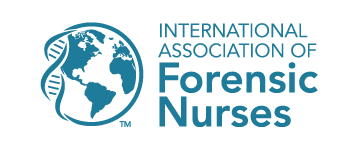The Forensic Nurse as a Death Investigator
In the United States, responsibility for death investigation lies with either the coroner or the medical examiner. A coroner is an elected official who, in some jurisdictions, has no specific educational requirements. A Medical Examiner is generally an appointed physician with training in forensic pathology. There are currently 11 Coroner states, 22 Medical Examiner states, and 18 states that employ some combination of both.
Every state/county has different needs and resources, and every state/county may run death investigations with a different approach. What matters is that every effort be made to ensure a thorough, accurate, and timely investigation. A faulty cause of death determination can significantly impact surviving family members, agencies responsible for planning public health policy, civil or criminal action, and even public safety. Some deaths may occur as a result of a criminal event, but every death is a medical event. The presence or absence of specific signs, symptoms, medications, and treatments can speak volumes to medical investigators. When a forensically trained physician is not accessible, an experienced and qualified forensic nurse can serve as an ideal alternative.
Research the death investigation system in your state.
The three critical components of any death investigation are
- medical/social history,
- examination of the body, and
- scene investigation.
If any one component is lacking, the investigation is incomplete. In counties where non-medical Deputy Medical Examiners are being asked to conduct the majority of a death investigation, medical expertise should be readily accessible to them. A forensically trained nurse can be an ideal medical representative in these situations.
A nurse who assists with death investigation must first be an experienced and competent nurse, preferably with considerable experience in the ER and/or ICU. It is in the clinical setting that the nurse will develop and refine analytical assessment skills and learn to handle the psychosocial events that often accompany an unexpected or traumatic death. At a minimum, the nurse could also earn certification through the American Board of Medicolegal Death Investigators (ABMDI).
Other Resources
Strengthening Forensic Science in the United States: A Path Forward
National Academy of Sciences, 2009
Improving Forensic Death Investigation
National Institute of Justice, 2011
Medical Examiner and Coroner Systems Report
Report on medical examiner and coroner systems in the U.S. by the DOJ, 2004.
Submitted by:
Jennifer Schindell lives in Albany, OR. She received her RN BSN from UAA (Alaska) and Medcenter One College of Nursing (North Dakota). Jennifer is an Oregon State Certified Medicolegal Death Investigator and a Registered Diplomat with the American Board of Medicolegal Death Investigators (D-ABMDI). Her primary areas of interest are biomechanics related to traumatic injury and child/infant death prevention. She can be reached at: schindell1@comcast.net
